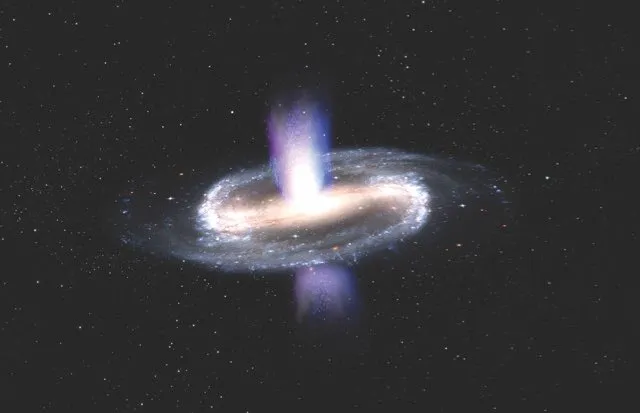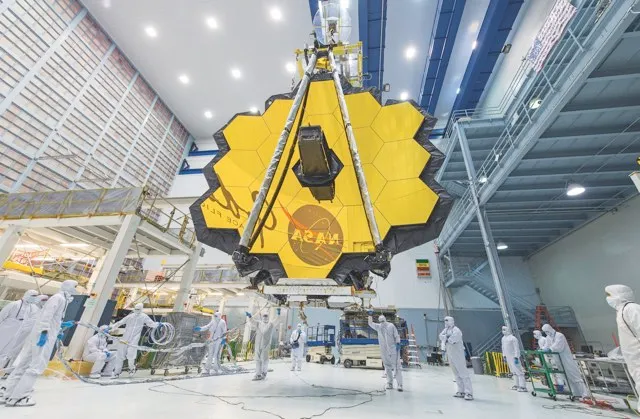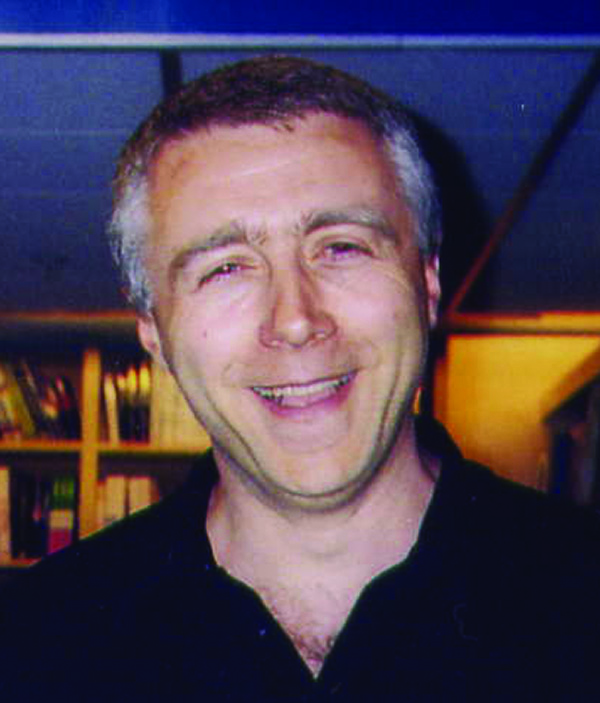As the fireball of the Big Bang expanded and cooled, it went from white-hot to cherry-red before finally fading into invisibility. The Universe was plunged into blackness and the resulting cosmic dark age stretched on interminably. Over time, the Universe doubled in size, doubled once more, over and over again, then, one day, something extraordinary happened. The dark age came to an end. Across the entire length and breadth of the Universe, stars began switch on like lights on a Christmas tree.
The first stars either came together under gravity to create the first galaxies, or were actually born in the clouds of gas and dust that made up the first galaxies. And the hunt to find these first galaxies is hotting up. One project – the Re-ionization Lensing Cluster Survey (RELICS) – has found around 300 galaxies that existed in the first billion years of the Universe’s history. One galaxy in particular is so old that the Universe it occupied was a mere 3 per cent of its present age of 13.82 billion years. Such objects appear in astronomers’ telescopes like persistent after-images, their light having travelled across space for billions upon billions of years before reaching us.
Back in time
More than 40 astronomers in many countries have been involved in the RELICS project, contributing hundreds of hours of observing time on the Hubble Space Telescope and the Spitzer Space Telescope. However, the principal observing instrument is the Universe itself. The gravitational fields of the massive clusters of galaxies that pepper the Universe act like giant lenses that focus and magnify the light of more distant galaxies that are often far too faint to see by any other means. “We take advantage of nature’s own telescope,” says Dan Coe, principal investigator of RELICS at the Space Telescope Science Institute in Baltimore.
To find the useful lensing clusters that would help him spot the oldest galaxies, Coe searched through Hubble’s archive of images and a recent catalogue of around 1,000 galaxy clusters observed by the European Space Agency’s (ESA’s) Planck satellite. Planck’s principal purpose was to image the cosmic background radiation – the ‘afterglow’ of the Big Bang fireball itself – but the ‘far-infrared’ light it picked up also comes from warm dust in galaxy clusters. “We ended up with 41 massive galaxy clusters,” says Coe. “We selected them for their extreme mass, which makes them enormously powerful gravitational lenses.”

In the immediate neighbourhood of each cluster are literally thousands of ghostly images of distant galaxies that by chance have been ‘gravitationally lensed’ by the cluster. But most are of galaxies that are not at great distances, and so not in the very early Universe. “The trick to finding truly ancient objects is to look for lensed galaxies that appear in infrared images from Hubble and Spitzer images, but not in Hubble images taken at visible wavelengths,” says Coe. But to understand why this reveals ultra-distant, ultra-early galaxies, we need to look at the concept of ‘redshift’.
Seeing red
When the Universe was younger, it was smaller. The most distant galaxy in RELICS existed more than 13 billion years ago when the Universe was less than one-thousandth of its current size. As space expanded over that time, it also stretched the light from that galaxy. Since red light has a longer wavelength than blue light, the light of such galaxies is shifted to the red end of the spectrum, or ‘redshifted’.
The light of the earliest galaxies has been so severely redshifted that its visible light now appears as ‘infrared’, at wavelengths beyond the red end of the spectrum. Thus, the galaxies have the unique characteristic of being invisible to Hubble’s Advanced Camera for Surveys but visible to Hubble’s Wide Field Camera 3, which is sensitive to infrared light. Spitzer’s infrared imaging instruments are also important in determining whether galaxies are at extremely high redshift, or less distant and merely intrinsically red due to dust or old age.
The gravitational lens formed by a galaxy cluster zooms in on a tiny region of the night sky so it might be expected that such a region would be more likely to contain empty space than any galaxies in the distant Universe. However, it turns out that galaxies in the early Universe were much smaller and a lot more numerous, so actually there is a good chance of them appearing in the field of view of any given gravitational lens. This explains why RELICS has found not a handful of galaxies, but around 300. These date back to the first billion years of the Universe and include the brightest ones ever observed from that epoch.
Among the 300 galaxies is the rather unimaginatively named SPT0615-JD. It has a redshift of 10, which means it existed when the observable Universe was less than one-tenth of its current diameter and only about 400 million years old (the current record-holding galaxy, found in a previous survey, actually has a redshift of 11). The lensing effect has distorted the galaxy into an extended ‘arc’ and Coe says further observations will be needed to discern any details. Nevertheless, it is already obvious that SPT0615-JD is quite unlike a present-day galaxy. It is only one-twentieth of the diameter of the Milky Way, has less than one-hundredth of its mass, and none of its regularity. In fact, Coe and his colleagues refer to it as a ‘smudge’. The other 300-odd galaxies are similarly small.
If we had a time machine and could go back to a redshift of 10, we would find ourselves in a different Universe. There would be no galaxies with distinct structures like today’s ‘giant ellipticals’ and ‘spirals’. In their place we would see tiny, disordered blobs, often less than one-hundredth the diameter of the Milky Way. Such galaxies would be undergoing star formation at a ferocious rate, often hundreds or thousands of times faster than galaxies in today’s Universe. There are at least two reasons for this. First, gas – the raw material of stars – was plentiful. Second, galaxies at a redshift of 10 were thousands of times more numerous than today’s galaxies and far closer together, resulting in frequent collisions and mergers, which triggered intense bouts of star formation.

The fact that mergers were such a dominant feature of the early Universe may tell us something important about the galaxies of that time. “Very possibly, we are seeing the building blocks of today’s galaxies,” says Coe. “As time passed, these ancient galaxies were destined to collide and merge over and over again. In fact, our Milky Way could well have undergone thousands of such mergers to reach its current size.”
According to Coe, we have not yet seen the first galaxies, since even the earliest galaxies we’ve found contain older, bright red stars that are near the end of their lives. The first galaxies could conceivably have formed a mere 200 million years after the Big Bang. The best hope of finding them, says Coe, is by using the James Webb Space Telescope, the successor of Hubble, which is due for launch in 2021. With its 6.5-metre primary mirror, it will orbit around the Sun at the so-called Lagrange-2 point, about a million kilometres from the Earth. Lagrange points are areas in space where gravity from the Sun and Earth balance out the orbital motion of a satellite. Placing a spacecraft at any of these points allows it to stay in a fixed position relative to the Earth and Sun with a minimal amount of energy needed to change its direction.
Digging deeper
As James Webb will be sensitive to far-infrared light, it will be capable of detecting galaxies at ultra-high redshift. The hope is that the James Webb will shed light on ‘cosmic re-ionisation’, a key event which fundamentally changed the nature of the gas floating throughout space in the early Universe. About 380,000 years after the Big Bang, the fireball had cooled sufficiently for electrons to combine with hydrogen and helium nuclei to form the Universe’s first atoms. However, there is a mystery. Today, when astronomers observe the hydrogen gas floating in space, they discover that its electrons have been blasted away – it has been ‘re-ionised’. The only thing that could have re-ionised the Universe is high-energy ultraviolet light. So where did it come from?
Planck observations indicate that re-ionisation began at a redshift of about 9. One possibility is that the responsible ultraviolet light came from the first stars, which may have started forming just 100 million years after the birth of the Universe. Another possibility is that the ultraviolet light came from matter heated to incandescence as it swirled down onto supermassive black holes. These formed in the hearts of newborn galaxies, causing them to shine as super-bright quasars. Coe thinks it’s possible that multiple sources re-ionised the Universe. “Maybe stars are responsible for most of the re-ionisation and quasars for some,” he says. “And it is even conceivable that there might be another source – perhaps the annihilation of particles of dark matter, mysterious invisible stuff known to outweigh the stars and galaxies by a factor of six.”

But the hope is that James Webb will help answer many more. Like when did the first stars form? Such Population III stars, as they are known, would have contained only hydrogen and helium from the Big Bang but no heavier elements such as oxygen and calcium and iron, which can be made only by nuclear reactions inside stars. Nobody has yet spotted any Population III stars, which are expected to have been much more massive than today’s stars and raced through their lives at breakneck speed in only a few million years before detonating as supernovae.
Hubble has already spotted galaxies making the transition from amorphous blobs to ordered structures, rotating like the great spiral of the Milky Way, but James Webb may find the earliest galaxies that exhibited such ordered rotation. In fact, there is a possibility that Coe and his team may be able to determine this with follow-up observations using the Atacama Large Millimetre Array in Chile. If they can detect emission from oxygen in any of their ancient galaxies, differences in the frequency of that emission across the galaxies could reveal whether some parts are moving towards us and some away in a systematic way. Such a doppler effect is the smoking gun for galaxy rotation.
James Webb may settle other questions, such as when did the first galaxies form? What did they look like? Are they truly the building blocks of galaxies like the Milky Way? “We have observed galaxy evolution over 13.4 billion years of cosmic time – that’s 97 per cent of the way back to the beginning,” says Coe. “I am most excited to see the missing 3 per cent – the last remaining jigsaw piece.”
- This article was first published onBBC Science Focusin March 2019 –subscribe here
Follow Science Focus onTwitter,Facebook, Instagramand Flipboard

